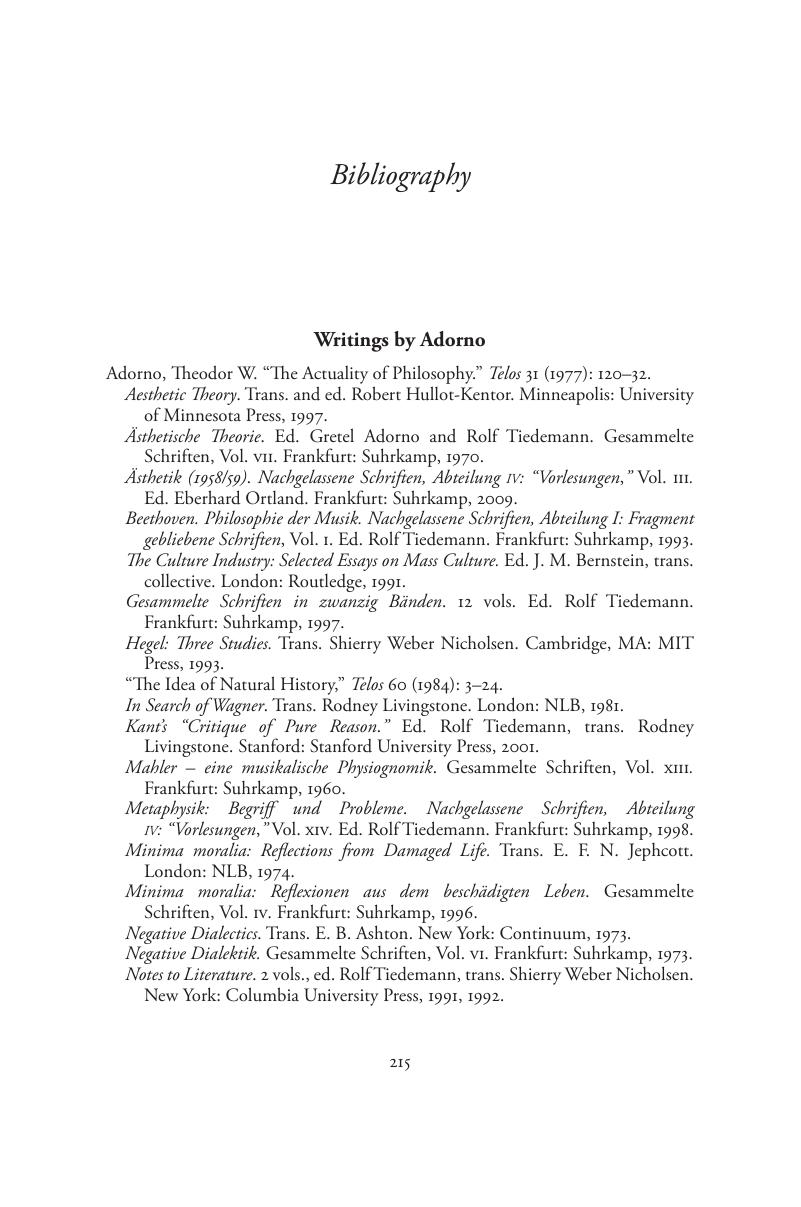Book contents
- Adorno’s Modernism
- Adorno’s Modernism
- Copyright page
- Contents
- Preface
- Introduction
- Chapter 1 Art and the problem of modernity
- Chapter 2 The beautiful and the sublime
- Chapter 3 The dialectic of aesthetic autonomy
- Chapter 4 Language, truth, and semblance
- Chapter 5 A topography of nothingness
- Chapter 6 Experience and metaphysics
- Chapter 7 An aesthetics of negativity
- Concluding remarks
- Bibliography
- Index
- References
Bibliography
Published online by Cambridge University Press: 05 October 2015
- Adorno’s Modernism
- Adorno’s Modernism
- Copyright page
- Contents
- Preface
- Introduction
- Chapter 1 Art and the problem of modernity
- Chapter 2 The beautiful and the sublime
- Chapter 3 The dialectic of aesthetic autonomy
- Chapter 4 Language, truth, and semblance
- Chapter 5 A topography of nothingness
- Chapter 6 Experience and metaphysics
- Chapter 7 An aesthetics of negativity
- Concluding remarks
- Bibliography
- Index
- References
Summary

- Type
- Chapter
- Information
- Adorno's ModernismArt, Experience, and Catastrophe, pp. 215 - 224Publisher: Cambridge University PressPrint publication year: 2015



